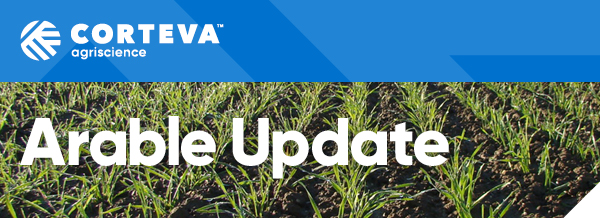
|
|
|
In the April edition
- Investing in yield protection makes even more sense this year
- Univoq key information, resources and new summer competition
- Dry spell may alter potato growers’ herbicide strategies this spring
- PT303 Protector Sclerotinia tolerance
- Reduce maize N applications by 20% and maintain yield
- Dow Shield 400 on sugar beet
- Corteva to showcase new arable innovations at Cereals 2022
|
|
|
|
|
|
Investing in yield protection makes even more sense this year
|
|
|
|
Protecting a crop’s potential and maximising its yield are priorities for all arable farmers at this time of year. But, as cereal fungicide programmes get into full swing, there is an added incentive to do so in 2022.
At the time of writing, wheat is worth significantly more than it was at the same time last year. Crops have begun to push through the growth stages as soil temperatures rise and, despite the current dry conditions, Septoria is not hard to find.
Looking at robust fungicide programmes to prevent losses is therefore of paramount importance.
In 2021 conditions were dry before the rains hit in May and septoria exploded across many areas of the UK. Looking ahead at the next four weeks – rather than back at the past four weeks – is the strategy to adopt.
Across the board, Univoq™ has shown how it can protect both crops and yield...(article continues, read it here).
|
Univoq key information, resources and useful links
- Further significant supplies of Univoq are being made NOW and will arrive in the UK shortly.
- Our summer competition has just gone live! Click here to enter.
- Univoq microsite, featuring 3 new virtual trials, plus more (here).
- Univoq product page for technical details and label (here).
- If you missed the Farmers Weekly webinar, 'Combating fungicide resistance' webinar, you can watch it here.
- Visit the Inatreq learning centre to fill any knowledge gaps and earn CPD points with our 5 video / quiz modules (here).
- Feature video: i-Q4™ Technology. Watch it here.
|

|

|

|
Dry spell may alter potato growers’ herbicide strategies this spring
|
Leaving weeds unchecked can reduce yield, slow down harvesting machinery and increase the risk of blight. Dry soils can crack or slip down the ridges, disrupting the all-important seal required for optimum efficacy from pre-emergence herbicides. As a result, rain or planned irrigation in the next few weeks will stimulate weed growth from the ridge surface and from depth. Dry conditions in unirrigated fields, and disruption to the herbicide ‘barrier’, means that the efficacy of pre-emergence chemistry will be compromised. This could well be a year when growers need to think about following up with a post-emergence spray.
Titus®, containing the active ingredient rimsulfuron, is a valuable herbicide which targets key problem weeds and is an invaluable tool in a dry season when pre-emergence activity will be negatively affected. The selective herbicide has been a mainstay of potato growers’ early-season programmes to control a wide range of broadleaf weeds including cleavers, chickweed, redshank, mayweed and oilseed rape volunteers. Titus has also demonstrated excellent activity on a range of grasses, notably couch... (article continues, read it here).
|
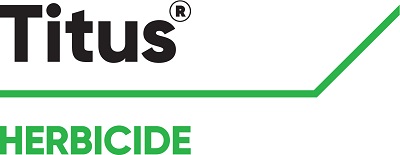
|
PT303 Protector Sclerotinia tolerance
|
PT303 is Pioneer's winter oilseed rape hybrid with a unique native multi-genic Sclerotinia tolerance trait. Sclerotinia is a soil-borne fungal pathogen, which can remain viable in the soil for up to 8 years. A single sclerotium produces 10 – 14 apothecia which in turn produce 10 – 14 million spores and it can affect many crops, including: oilseed rape, peas, beans, lucerne, carrots and potatoes (>400 host species).
|
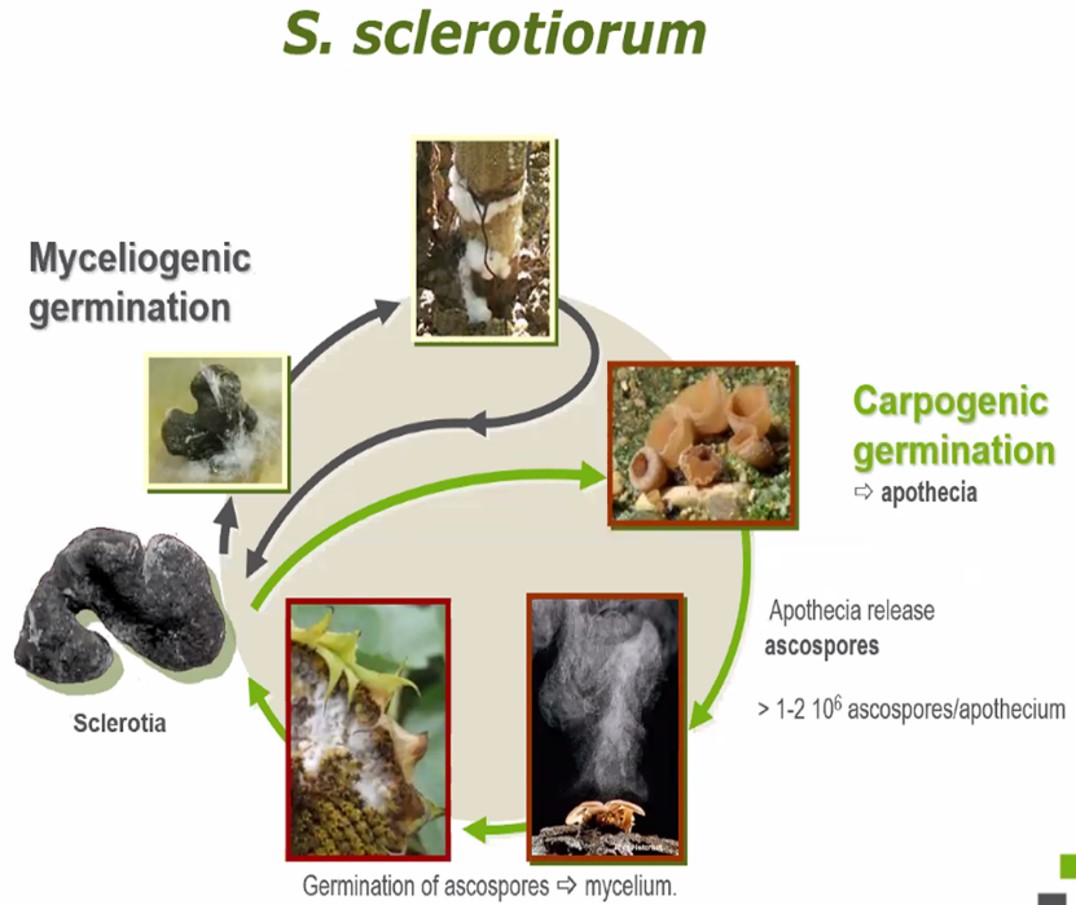
|
|
|
Sclerotinia is usually the main disease to impact OSR at the important flowering stage, and is favoured by warm and wet conditions at flowering / first petal fall. In severe infections the yield impact can be over 50%. Although epidemics are uncommon, localised infections occur most years and the inoculum burden continue to build if infections are not controlled. Traditional management of Sclerotinia involves monitoring crop and weather conditions, as well as fungicide strategies, managing susceptible weeds and crop rotation.
PT303 Sclerotinia Protector trait reduces the incidence of Sclerotinia in two ways:
- Reduction of incidence - by a reduction of the number of entry points and leaf resistance.
- Reduction of severity - by a reduction of the spread of the disease throughout the plant and stem resistance.
|
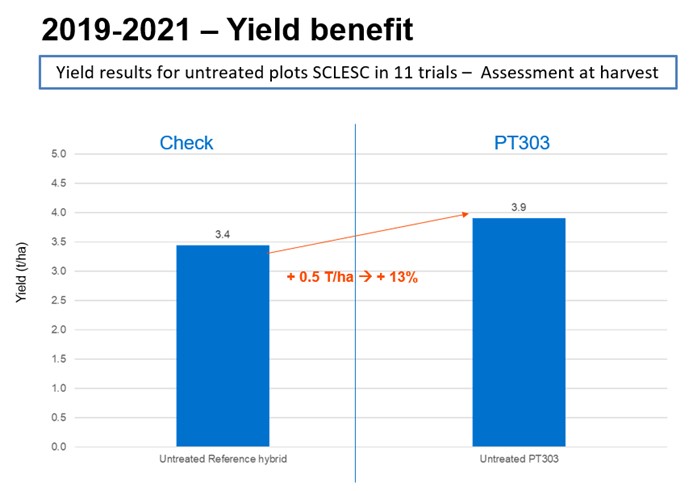
|
|
|
|
Reduce maize N applications by 20% and maintain yield
|
|
|
|
The high cost of nitrogen fertiliser and tight supply is forcing growers to look at ways of reducing nitrogen rates and ensuring the maximum return from every kilogram of artificial nitrogen-based fertiliser that is applied. This maize planting season, using a nitrogen stabiliser could stabilise enough N to allow growers to reduce applications by up to 20%, whilst still maintaining yields.
“The use of nitrogen stabilisers in the UK is growing, but is still reasonably limited, and this year the unprecedented high fertiliser prices and pressure on demand is bringing their use to the fore, and there really isn’t a better time to add them to your fertiliser programme,” explains Corteva’s Colin Bowers. “Nitrogen stabilisers slow down the conversion of ammonium to nitrate, preventing nitrogen loss through leaching and denitrification, keeping more nitrogen in the rooting zone for longer, resulting in greater yield potential,” says Colin.
Trials using Instinct® have shown a reduction in leaching of around 50%, and a reduction in denitrification through greenhouse gases of approximately 45%. Nitrogen is kept in the soil for longer, and for a maize crop, this has a significant impact on yields.
Instinct is usually applied through a crop sprayer, either alone or with herbicides or UAN, but it can also be added to slurry spread or digestate and requires a single rate of 1.7l/ha. The most important element of use is ensuring good soil contact, so it should be applied before ploughing or when rain is due to ensure good incorporation.
Now is the time to take action to get the best out of your maize this year with reduced inputs. Read more about Instinct here.
|

|
|
|
|
|
|
Dow Shield 400 on sugar beet
|
This year the 33% contract price rise for sugar beet reflects increases in input costs and inflation, and provides growers with a share of the improvements in sugar beet pricing.
Thistles are a common weed in sugar beet and it has been shown that only one thistle (a tall weed) per m2 can impact yields by as much as 11%. Dow Shield® 400 contains clopyralid and is very active against Compositae weeds such as thistles. Ideally use a programmed approach of 0.25L/ha, which knocks out apical dominance stimulating fresh growth from the crown of the thistle, followed by 0.5L/ha about 14 days later, which will finally kill the weed.
If only one spray opportunity is planned, then a single application at 0.5L/ha to the weed at rosette stage is the route to go. From similar studies it has been demonstrated that only 5 potato volunteers per m2 can result in a yield loss of up to 16.5 tonnes/hectare (circa £445/ha loss) and in addition they will be a source of potato blight and potato cyst nematode. Control of these volunteer potatoes is therefore important not just for the sugar beet crop but also for surrounding potato crops and the rotation. Dow Shield 400, ideally applied in sequence of 2 x 0.25L/ha with a 7-day gap, is the go-to strategy for the control of volunteer potatoes in sugar beet.
If there is a simple broadleaved weed problem the addition of 0.25L/ha of Dow Shield 400 to the mix, with activity on mayweeds and groundsel for example, will boost the performance i.e., broadens the spectrum and activity of the whole mix.
Find our more about about Dow Shield 400 here.
|
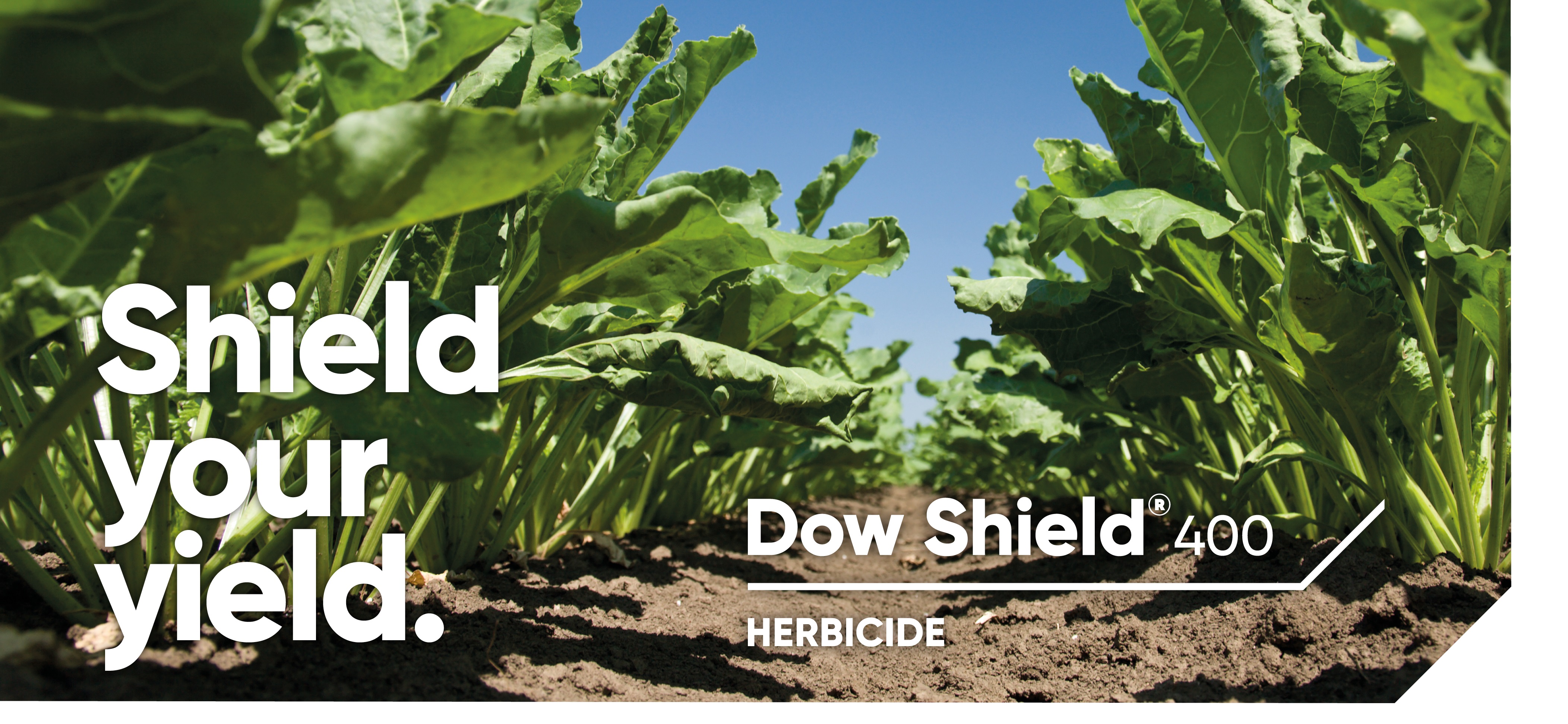
|
|
|
Corteva to showcase new arable innovations at Cereals 2022
|
We are really looking forward to being back at Cereals Event this year and seeing many of you there. On the Corteva stand we will be showcasing our latest innovations available while also looking at the company’s pipeline of future crop protection and seed products. Besides the usual barista coffee, pizza and cake (which we have all missed!), you can read more about what to expect on our stand here.
|

|
|
|
|
|

|
|
|
|
USE PLANT PROTECTION PRODUCTS SAFELY. Always read the label and product information before use. For further information including warning phrases and symbols refer to label. Corteva Agriscience UK Limited, CPC2 Capital Park, Fulbourn, Cambridge CB21 5XE. Tel: 01462 457272. ®, ™ Trademarks of Corteva Agriscience and its affiliated companies. Univoq contains fenpicoxamid and prothioconazole. Dow Shield 400 contains clopyralid. Instinct contains nitrapyrin. Titus contains rimsulfuron.
|
|
|
|
|